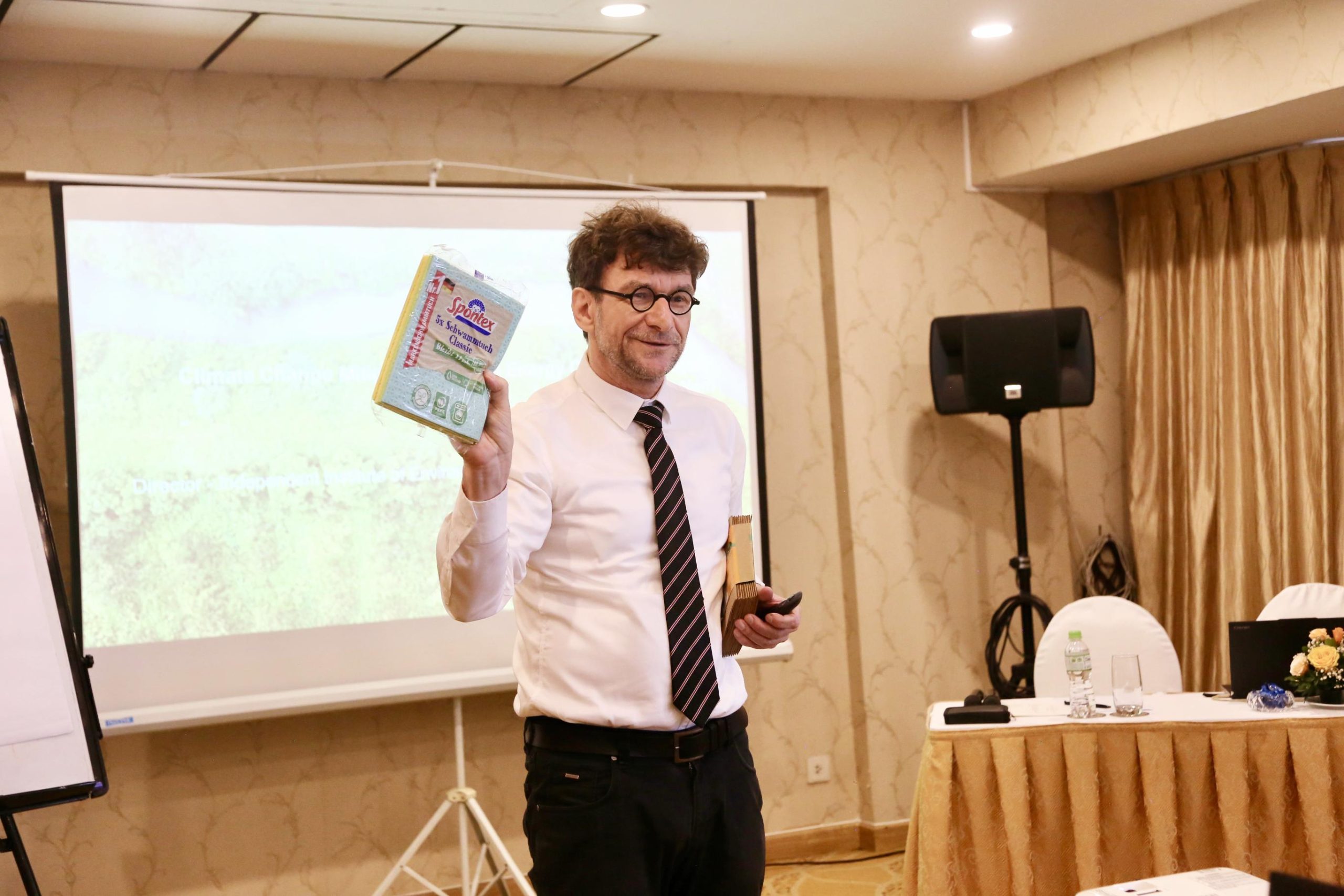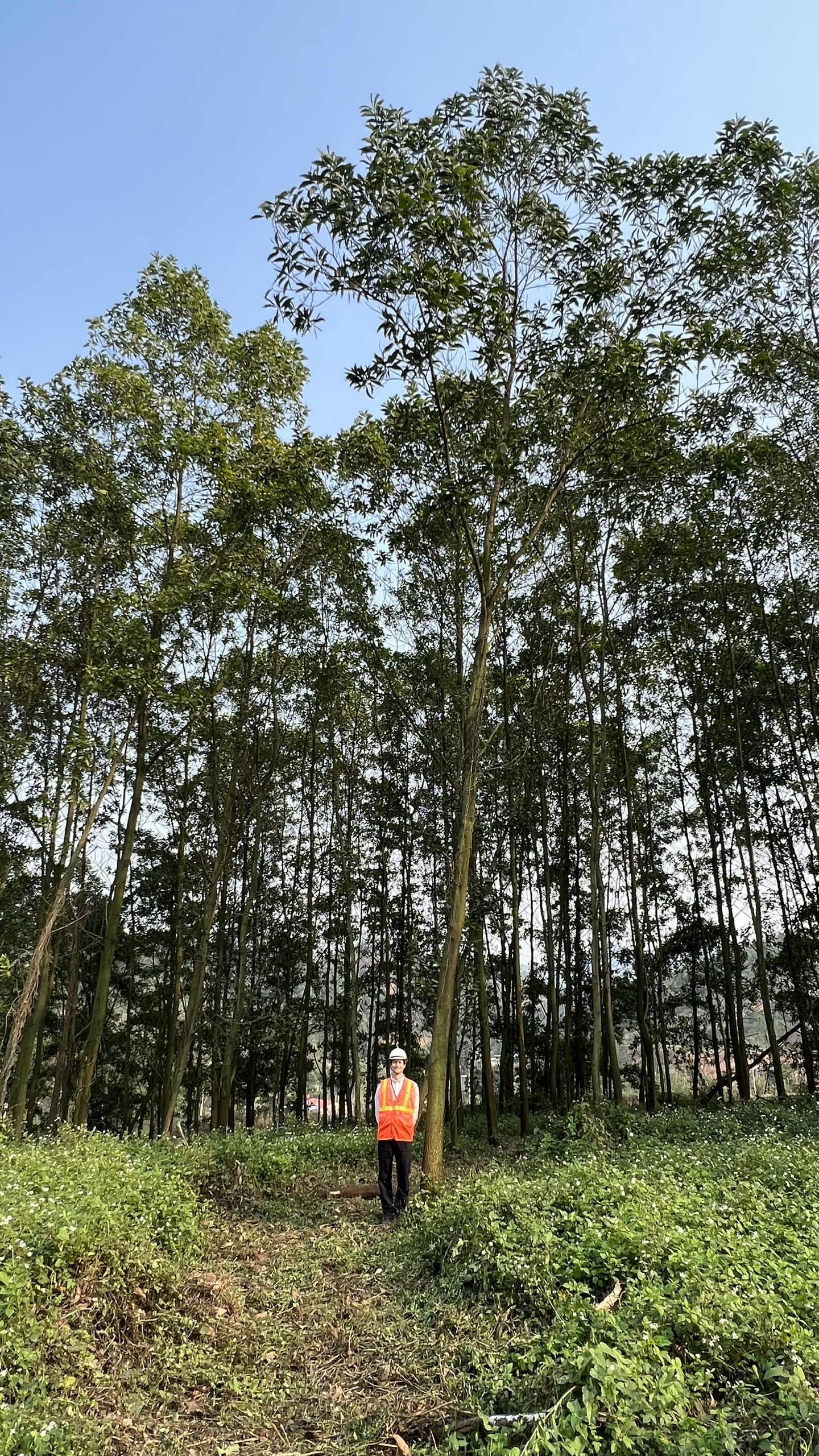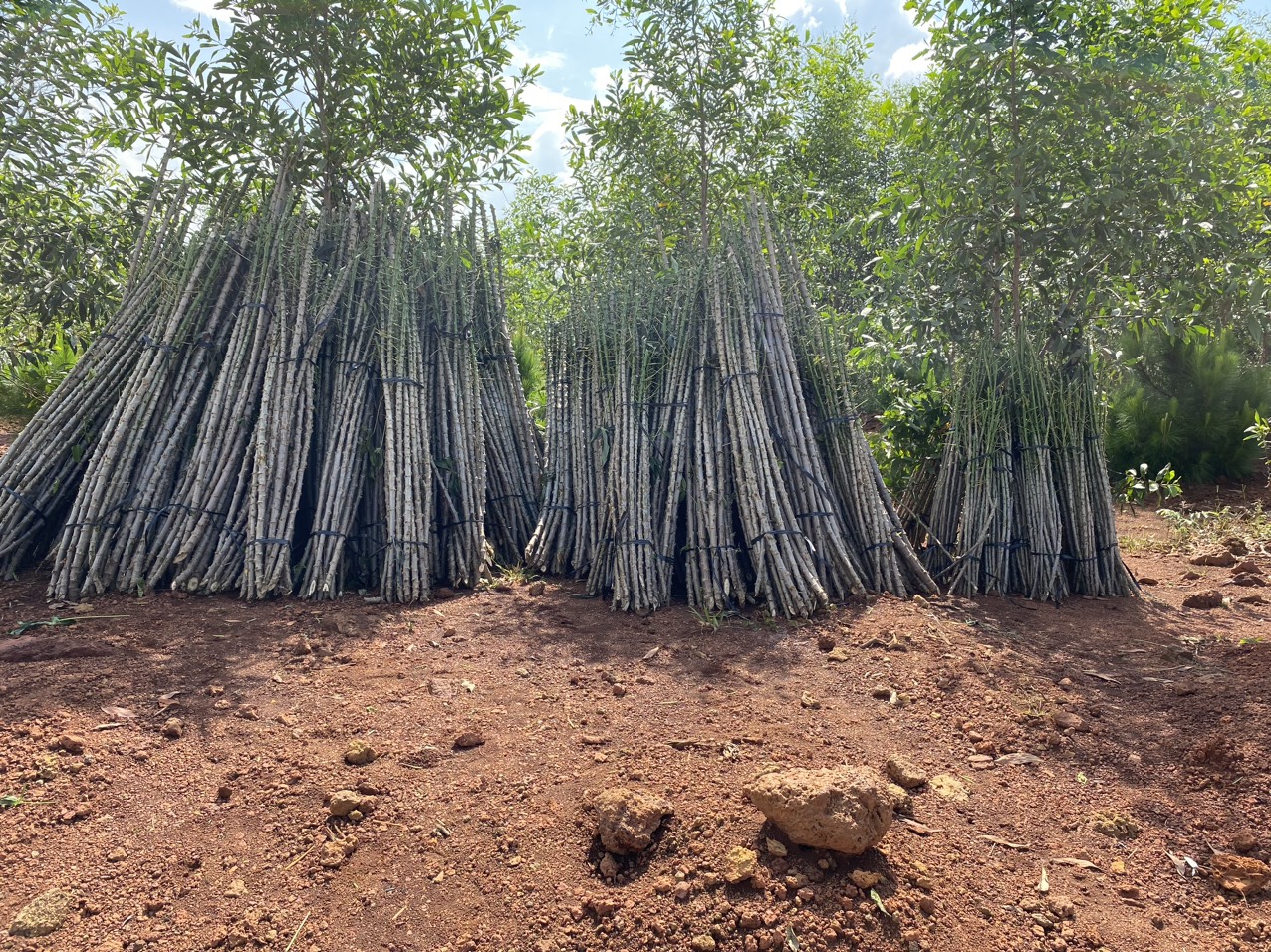The Independent Institute for Environmental Issues (UfU) evaluated the requirements for the economic use of bioenergy crops in Viet Nam within the projects CPEP and CPEP 2 “Cultivation of energy plants on set-aside mining sites in Viet Nam”. The projects promoted and investigated the cultivation of energy crops on post-mining sites in Viet Nam from 2015 to 2025.

As marginal areas, post-mining sites are not suitable for conventional agriculture due to heavy metal contamination and bad soil conditions. Thus, the cultivation of energy crops on these sites does not compete with food production. The CPEP project tested different energy crops with cassava, VA06 grass and Acacia hybrid being most the suitable.
UfU summarised its analysis of the requirements for the economic use of energy crops in Viet Nam and published the results in a recent manual. The main findings are presented here.
Legal and political framework for the bioenergy market in Viet Nam
Viet Nam has established a plan to develop bioenergy, promote energy transition and reduce GHG emissions. Biofuels are considered for the transport sector, while biomass plays a key role to replace coal in power generation. Therefore, the country’s current legislation confirms that bioenergy is a national priority, essential for Viet Nam to reach its net-zero emissions target by 2050. Nevertheless, it is crucial to move from policy-making to enforcement of a specific, robust, and coherent legal framework to yield economic benefits from cultivating energy crops. This includes financial mechanisms, raw material policies, enhanced policy enforcement, and investment in Research and Development.
Viet Nam’s bioenergy market
Viet Nam still depends on fossil fuels like coal, crude oil and natural gas, which accounted for 80 percent of the total energy production in 2021. However, renewable energy sources like solar-, wind- and hydropower as well as biofuels and waste have increased in recent years and already made up 21 percent of the total energy supply in 2021. To upscale these efforts, it is important to promote technology transfer and persuade decision makers that a well-established bioethanol industry reliably contributes to the country’s energy security.
Due to an unstable supply of feedstock, only two out of seven ethanol facilities in Viet Nam currently operate with a capacity of 56,808 and 98,750 tonnes per year. Thus, the country so far misses its goal to increase the output of ethanol and biodiesel to 1.8 million tonnes by 2025. Furthermore, China’s growing demand for cassava let to a higher export price in comparison to the domestic purchase price. Consequently, cassava exports increased by 22 percent between 2018 and 2021, reducing the domestic supply. However, the cassava exports depend heavily on buyers and cannot be secured in the long run. Given this, and the fact that the ethanol plant in Dong Nai province has therefore switched its input to maize, negotiating cassava offtake contracts between farmers and ethanol manufacturers, as well as strengthening capacity-building to boost productivity, could be a viable option to ensure a stable supply of feedstock to the ethanol facilities. This needs to be accompanied by expanding the amount of bioethanol facilities operating in Viet Nam to reduce transportation costs and GHG emissions. In addition to that, growing maize instead of cassava might be another opportunity to upscale the recultivation of post-mining sites with energy plants.
In Viet Nam, the Environmental Protection Tax applied on E5 is currently just 5 percent lower than on RON95. In addition, the country even imports bioethanol from the United States and South Korea and reduced the Most-Favoured-Nations-import-tariffs for bioethanol to 15 percent in 2020 thereby impeding the domestic production. Moreover, many consumers are still afraid that E5 gasoline might damage their engines and are not aware of its environmental benefits. If the Vietnamese government wants consumers to prefer E5 gasoline, it needs to increase the price differences for example through import tariffs and CO2 taxes on fossil fuels. However, this is just feasible if the domestic supply can be upscaled to meet domestic demand in the long-run. Awareness campaigns on biofuels might improve consumers’ demand. Investigations on how to reduce fuel losses due to evaporation as well as transportation and storage costs for E5 gasoline also need to be conducted to compete with conventional gasoline.
Potential bioenergy conversion scenarios and energy crops in Viet Nam
The mean cassava yield of the CPEP 2 project (8.42 tonnes per hectare) was lower than that of the CPEP 1 project (17.5 tonnes per hectare). The average yield stated in the literature varies between 12.73 and 35 tonnes per hectare. The cassava yields of the CPEP 1 project resulted in 49 percent of GHG emission savings in comparison to the use of gasoline. In the CPEP2 project savings was 17.38 percent. This shows that higher cassava yields on post-mining sites can significantly improve GHG emissions savings. Thus, the yield of cassava for bioethanol production on marginal lands need to be increased to remain competitive, for example through breeding programs or more ecological cultivation methods such as crop-rotation or agroforestry. Moreover, methods to obtain bioethanol from agricultural residues, including cassava stems and waste pulps from starch-producing industries should be investigated to become operational and cost-efficient, thereby increasing the amount of bioethanol gained per hectare of cassava harvested.

Within six years of cultivation, Acacia hybrid stands accumulated an average dry biomass of 93 tonnes per hectare. Acacia hybrid can be co-fired in coal thermal power plants to generate electricity, but further investigation is needed to improve its efficiency compared with coal combustion. However, as long as the Cost-Insurance-Freight-price of imported coal does not increase, the combustion of acacia wood is less competitive than coal. Thus, owners of coal power facilities need financial incentives through policy measures to favour acacia wood over coal. Additionally, bioeconomic utilisation pathways of acacia wood are promising and warrant further exploration, particularly for the production of biochar and lignocellusic raw materials. The main advantage of these pathways over firing is that biomass carbon stocks are mainly retained.
The dry matter yield of VA06 grass varied between 25.5 and 33 tonnes per hectare and year, making it comparable with the yields of the south-central coastal provinces. VA06 grass serves as forage for livestock while the resulting manure can be processed into biogas by small-scale biogas digesters. However, many farmers lack financial resources and tend to discharge the manure to the environment, causing additional greenhouse gas emissions and environmental pollution. On the farm, the biogas can be directly used for cooking while the digestate serves as fertiliser on the fields. Consequently, farmers in remote areas become less dependent on electricity, fossil fuels, firewood and chemical fertilisers and get the opportunity to add value to their waste. Nevertheless, the manure management practices to produce biogas need to be optimised to enhance the potential energy production for example through technology transfer, financial advice or knowledge exchange. As a means, independent inspectors might examine the biogas digesters regularly to ensure their functionality. Farmers might also share a biogas digester to split costs for construction and maintenance while benefiting from economies of scale.
Outlook for the economic use of energy crops in Viet Nam and possible legal strategies in future
Lastly, there are a total of 22,185 hectare of marginal areas suitable for growing cassava for bioethanol production in Viet Nam, which will eventually increase, because Viet Nam’s Prime Minister approved a new plan for the expansion of extracting mineral resources in the future. Increasing the cultivation of energy crops on these areas has the potential to further save GHG emissions and support the country in achieving its goal to reduce GHG emissions by 92 percent until 2050.
On 19 August 2025, UfU organised a workshop on the legal regulations surrounding energy plantations, climate protection, and the restoration of post-mining sites. The key agenda content was the technical regulations for suitable energy crops and farming practices in specific post-mining areas. This regulation was developed in CPEP and will be published by Vietnamese authorities. Furthermore, delegates at the workshop agreed that the state should develop financial mechanisms for planting and using energy trees, as well as mechanisms for participating in and benefiting from domestic and international carbon markets (under Article 6 of the Paris Agreement) for these projects.

For more details, please refer to the full manual at: https://www.ufu.de/en/downloads/manual-requirements-for-the-economic-use-of-energy-crops-in-vietnam/
For more information about the project, please visit: Cultivation of energy plants on set-aside mining sites in Viet Nam | Internationale Klimaschutzinitiative (IKI)
Contact: Niklas Müller (niklas.mueller@ufu.de); Dr. Arne Reck (arne.reck@ufu.de); Thi Thuy Nguyen (thuy@ufu.de)



